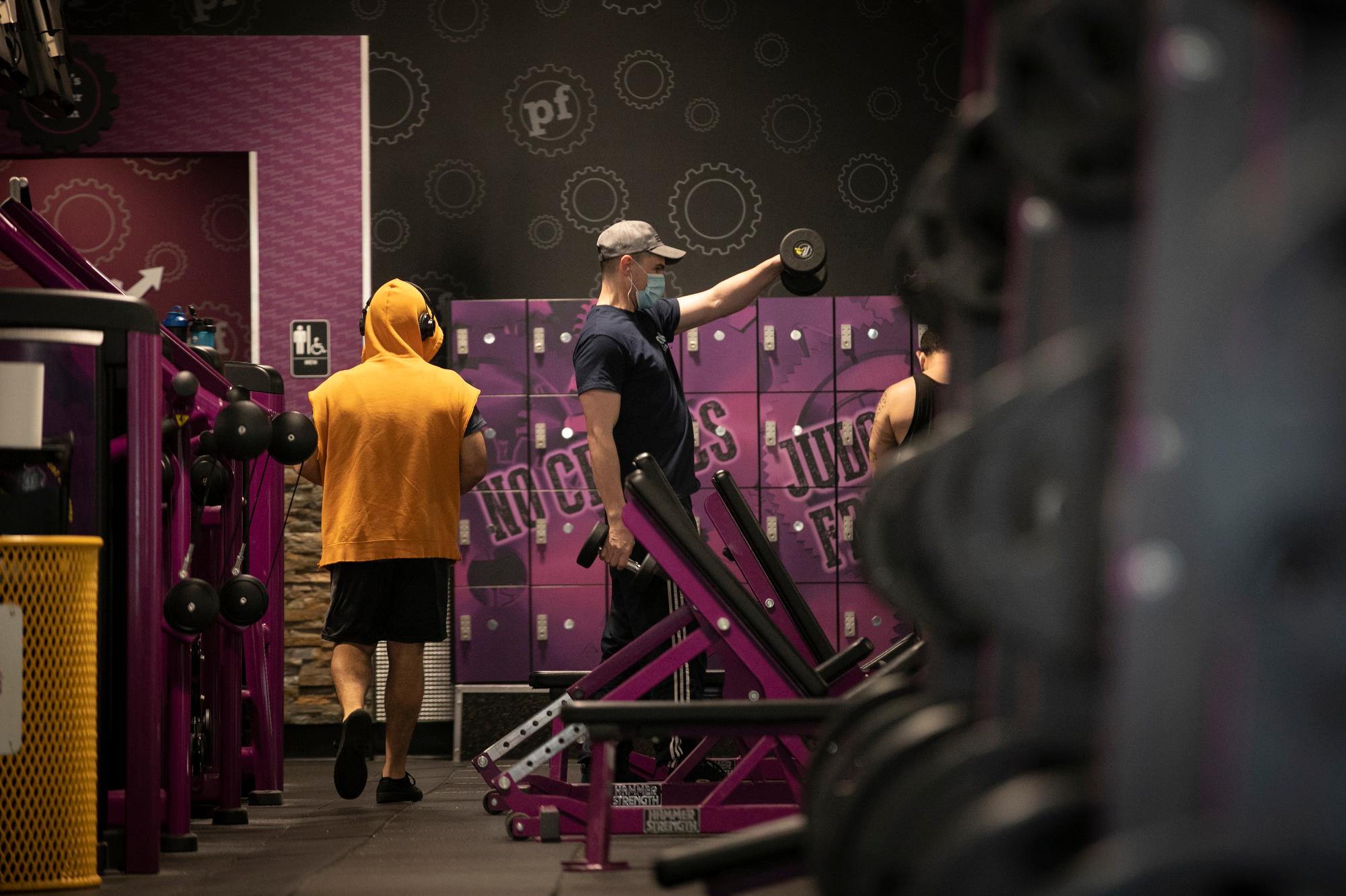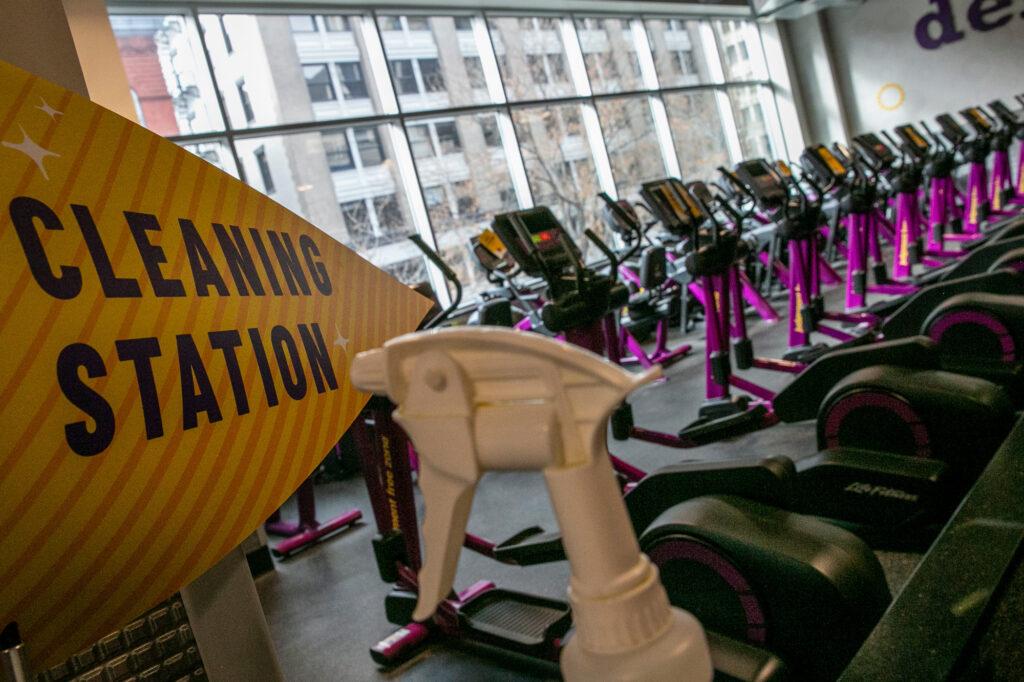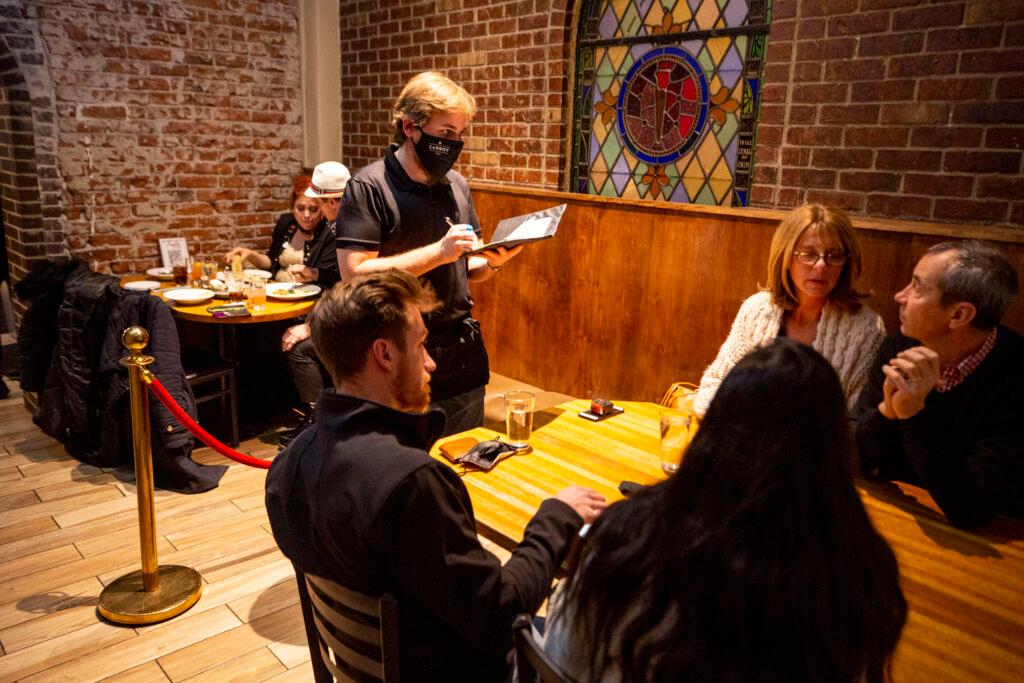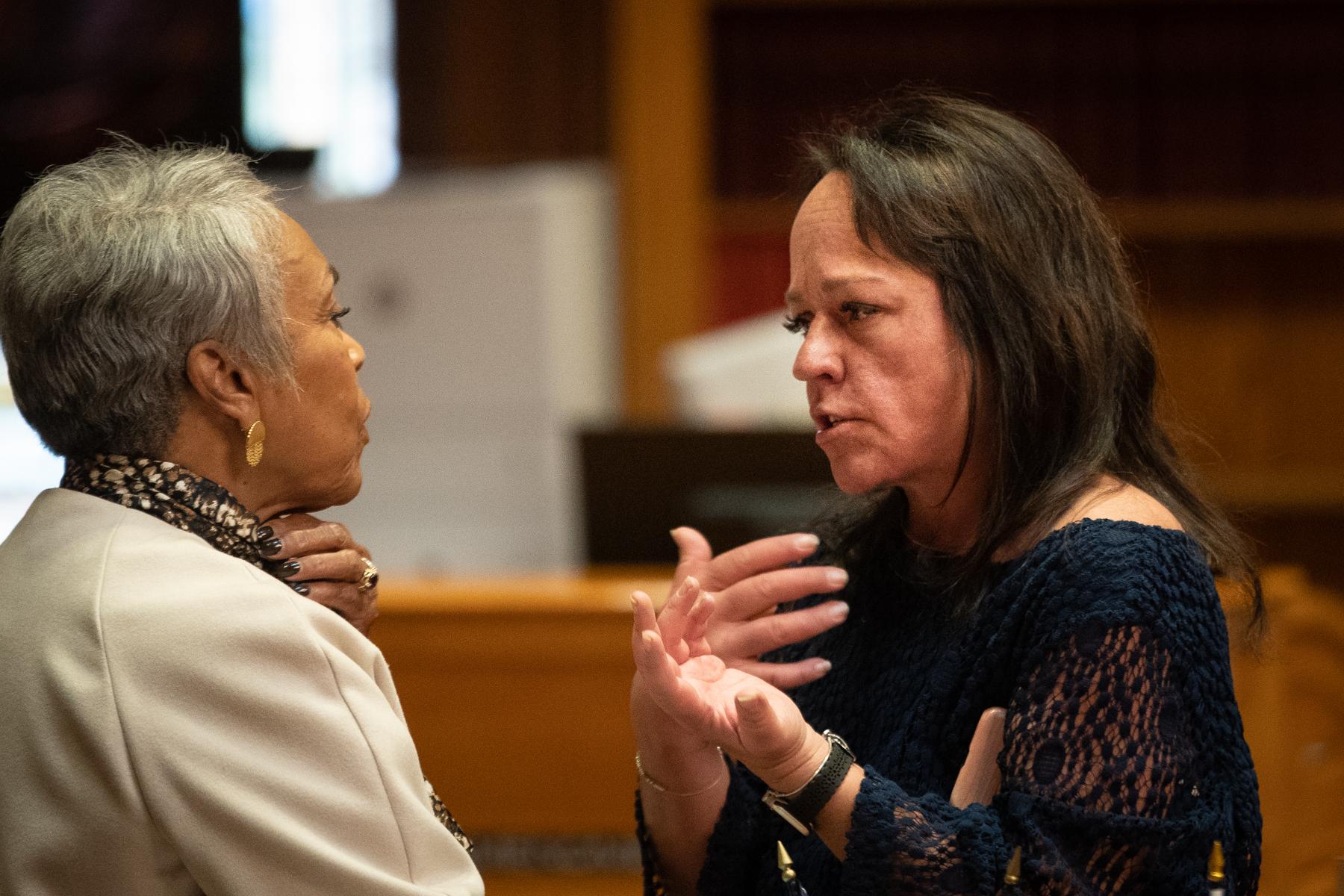
With the pandemic evolving and the most vulnerable Coloradans getting closer to protection from COVID-19 through vaccines, Gov. Jared Polis said Friday that the state would change the restrictions dial to allow for bigger crowds in restaurants and gyms.
At a news briefing, Polis said the changes would go into effect Saturday at 9 a.m., at which point Front Range counties will move from working under orange restrictions to yellow.
"Colorado is moving in the right direction," Polis said. "But that could easily change."
The biggest change in the dial is the speed with which counties can now move to fewer restrictions. Under the current dial, most measurements of viral transmission were taken over 14 days, forcing counties to show sustained improvement before they moved to a less restrictive place. Polis has now cut that in half.
That allows an immediate shift of most, perhaps all, of Colorado's counties to less restrictive conditions.

Gyms and fitness clubs are encouraged by the changes
Even before the actual changes were announced, business owners were excited about the prospect of welcoming back customers.
“We're excited, we see the light at the end of the tunnel,” said Robin Jost, human resource department head for the Planet Fitness franchise group, which owns eight fitness centers in Colorado. “There's nothing more important than the mental and physical health of the whole community, and getting back to a gym is so important right now, more than ever.”
She said the pandemic forced the closure of nearly 20 percent of Colorado’s 900 fitness clubs. When the crisis hit, her group furloughed 160 workers. Things got better as conditions improved over the summer and restrictions eased.
Then the fall surge hit, and most of Colorado’s counties moved their dials to the highly restrictive red level, which meant gyms could open to 10 percent of capacity. She said that day a newly formed advocacy group, the Colorado Fitness Coalition, spoke to the governor’s office.
“They said to us, ‘We know this is not survivable, but we have no other option’ because the cases at that point were so bad,” Jost said.
Fast forward to now and the state has survived the fall surge and a feared post-holiday surge that never fully materialized. Vaccinations are rising and cases, transmission rates and hospitalizations are at their lowest levels since late fall.
Now gyms and fitness centers are operating at 25 percent of capacity. The changes to the dial mean that’s increased to 50 percent throughout the Front Range counties, and even more in some other parts of the state. Restaurants too will be able to expand indoor dining to 50 percent of capacity, or 150 people.
“We have been told by our members (customers) that they're eager to come back, they're anxious to come back,” Jost said, noting many fitness businesses have already been pre-approved for the state’s 5-star business certification.
Under that regime, small businesses can qualify for fewer restrictions by agreeing to implement basic procedures to reduce the chances of infecting patrons.
Under the new rules, once 70 percent of Coloradans 70 and older have been vaccinated, 5-star businesses will be able to move to the next level down on the dial. In most cases, that will be "blue" conditions allowing for 175 people , or 50 percent of capacity, whichever is less, in gyms or restaurants. The state is likely to reach that point by the end of the month.

Restaurants search for relief as they wait for warmer weather
The changes could be the start of a rally for restaurants too — if infections stay low.
Before the changes were announced, Sonia Riggs, president and CEO of the Colorado Restaurant Association, rattled off a series of statistics about the devastating impact of the pandemic on an industry that relies so heavily on in-person service. About 94,000 restaurant jobs have been lost and roughly 40 percent of the industry’s workforce have been laid off or furloughed, she said.
Many restaurants closed their doors and many are hanging by a thread. The typical profit margin is in the three to 5 percent range, and much more federal financial relief will be needed to keep the industry afloat, said Riggs.
“Restaurants won't be able to survive until they’re at 75 capacity,” Riggs said. “There’s only so much an industry can take.”
Better weather will help once spring arrives. The state and cities have encouraged outdoor dining, which restaurant customers seem to like.
But the group would like to see capacity increased as much as possible, removal of the six-foot distance requirement, especially outdoors, and extending hours for last call.
She envisions the climb-out to take some time, under the best case scenario.
“We're hearing from economists, restaurants won’t begin to recover until they’re back to where they were pre-COVID,” Riggs said.
The broader business community is watching it all very closely.
“What we're constantly doing here is balancing, trying to stop the spread of a pandemic that is so devastating, with the economic hardship that brings,” said Kelly Brough, president and CEO of the Denver Metro Chamber of Commerce.
She said her group has urged giving local public health departments flexibility, something the new dial does.
“You can't have a one size fits all for the entire state,” she said. “Depending on our counties and our region, we see different issues, different risks. I think rural Colorado and urban have very different approaches here and they should sometimes.”
The window for public comment on the changes was tight. The state unveiled the concept Saturday and gave people until Monday to comment, a little more than two days. But, it seems to be a change from some earlier state moves, where no heads up was granted before decisions were announced. In December, groups representing cities, counties, county commissioners, local public health leaders and hospitals sent a letter to Gov. Jared Polis (D), saying they wanted “no surprises” and more cooperation with the governor’s office.
Local public health officials seemed to take a cautiously optimistic view of the new changes.
“I think it simplifies things a little bit,” said Dr. Margaret Huffman, who directs the community health services division at Jefferson County Public Health. The new metrics based on a 7-day, rather than 14-day, measure of incidence rate, percent testing positivity and hospitalizations “allows us to be a little bit more responsive in real time,” Huffman said.
And if pandemic metrics do get worse again Huffman thinks counties, certainly along the Front Range, should look to coordinate, to move to renewed restrictions together. “We need a complete regional approach. Our hospitals are not just located in one county,” Huffman said. “Our hospitals are an entire system and public health is an entire system, part of the healthcare system throughout the Front Range and throughout the state.”
The consensus among local public health officials is that they’re ready for the coming changes, according to a state group representing them.
“The overarching understanding is that there needs to be an adjustment to the dial,” said Sarah Lampe, interim executive director of the Colorado Association of Local Public Health Officials, a group that signed on to the December letter to the governor. “I think they (local public health officials) are embracing the fact that they're getting and able to provide feedback on the adjustments.”
The vaccinations, with much-desired protections for older residents and frontline health workers, have changed the landscape.
“We're really in a more positive place,” Lampe said. The key will be in the details of easing restrictions and figuring out when and how much, based on progress in getting various groups vaccinated, “knowing that community transmission could still continue to go up again.”
Lampe said there’s a lot of interest in smaller counties having more control over their dials, which would provide flexibility in those less populated parts of the state.
“We are open to the idea of changing the dial, even though it'll cause a lot of other changes, because we know that we have to get the economy going again,” said Chana Goussetis, public information officer for Boulder County Public Health. “A lot of people are suffering.”
Tweaking the dial to allow for changes in 7-day intervals, rather than 14, seems like a good idea, she said. “It’s more responsive.” Boulder County told the state it supports the new ranges in the dial as long as no county can move without already having met the desired target of having vaccinated 70 percent of their 70 plus population, otherwise “it’ll increase transmission.”
Meanwhile, the state’s hospitals praised the state for seeking feedback.
“As hospitals have evidenced through their clinical advancements in caring for COVID-19 patients, the commitment to evaluating and improving throughout the past year has helped Colorado,” said Cara Welch, spokeswoman with the Colorado Hospital Association. “We applaud the state’s effort to seek input and work with local public health agencies as they evaluate changing the dial framework.”
Would Easing Restrictions Jeopardize Return To In-Person School?
Are educators worried changes to the dial could upend the momentum for Colorado kids to return to school, in person? You bet, said Amie Baca-Oehlert, president of the 35,000 member-strong Colorado Education Association
“There’s a little bit of trepidation as we look to yet another change to the dial,” she said. She noted that one of the biggest factors for sending kids back to remote learning is community spread of the virus, which could happen as restrictions are lifted. Also, she said, that’s what happened in the fall, when the spike of cases resulted in many school districts halting in-person classes. “It does feel a little premature,” Baca-Oehlert said. She said her group has not been consulted about the latest changes in the dial.
She said the “constant changes and shifts” in the pandemic response has presented challenges for kids and teachers alike and “we were hoping we would have as few interruptions as possible.”
What’s more, teachers are set to start getting vaccinated soon, next week. “We’re just on the cusp of our educators getting vaccinated,” she said. “We would have liked to see just a little more time before people feel more comfortable,” and possibly let their guard down regarding masking, distancing, and hand washing. Those are measures Coloradans seem to have followed well as they brought down last year’s surge in new cases.
Brough, with the Denver Metro Chamber of Commerce, echoed those concerns.
“We also think it's really important we focus on how we get our kids back to learning, and some of the long-term risks of our kids not being able to learn,” during the pandemic, she said. “We are very concerned about our kids and what they describe as their struggles when it's only online.”
A Voice of Extreme Caution
Not everyone thinks tinkering with color-coded dials in a way that means loosening restrictions is a good idea.
“I would caution Colorado to be cautious right now,” said Dr. John Swartzberg, a clinical professor emeritus and expert in infectious diseases at the UC Berkeley School of Public Health. Swarztberg was critical of California Gov. Gavin Newsom two weeks ago when he lifted that state’s stay-at-home order, calling it premature.
He said nationally COVID-19 case numbers are way down, but in reality they’re back to the level seen a couple of months ago. “And December 1st was not a good place,” he said.
Swartzberg worries the national curves for things like cases, transmission and hospitalizations will continue to rise and fall, but then things settle at even higher numbers than before, at a higher baseline.
For example, he said, the U.S. was averaging 20,000 cases after last summer’s surge. Then it averaged 40,000 cases a day in early October. Then an enormous December surge left almost a hundred thousand people dead in the U.S. in January alone.
“I don't know where it's going to settle out, but we're right now at about three times the number of cases per day than we were on October 1st,” Swartzberg said. “If we start loosening things up too quickly, if we get another surge, it's going to be built upon a much higher baseline of cases.”
The country came just “within a hair's breadth of catastrophe in terms of a failure of our healthcare system” with the December/January surge,” he said. “If we have a surge on top of where we are now, or even where even where we might be in two or three weeks, or a month, we'll be in much worse shape.”
Another huge wild card: emergent, more transmissible stains of the virus. The state health department said this week it’s confirmed 16 variant cases in the state. CDPHE said 13 were the B117 variant first discovered in the United Kingdom; three were the L452R variant discovered in California.
Swartzberg looks to other big countries, like Australia, Japan and Germany, as having found a better way to suppress transmission and prevent large scale loss of life. Australia, for example, is managing the pandemic through “short, sharp” responses, as the NYTimes described it. It shuts things down for less than a week when cases pop up, to allow for contact tracing, and then life can basically return to some normalcy. And it’s preparing to host 30,000 fans a day for the upcoming Australian Open tennis tournament. But its case numbers are dwarfed by those in this country.
In the U.S., “we're just sort of bumbling our way through this pandemic, letting people die,” Swartzberg said. “We're not doing it right.”
And he worries that in Colorado residents now might ease up on protective measures when they hear about changes to the dial system. And he warns it could start to happen as soon as this weekend's Super Bowl, the next potential super-spreader event.
“My concern is not so much how we dial things. I think reasonable people can make reasonable decisions about that,” he said. “I think the concern is what people hear and how they behave.”
Almost on cue, as businesses celebrated and researchers issued warnings of re-opening too soon, the state announced later Friday that more cases of mutated coronavirus variants have been found in the state. Another 20 cases of the British variant were added to the state's dashboard, along with 10 cases of what has been called the "West Coast" variant.
Scientists believe that vaccines can control the variants, or be quickly adapted to the control them.
This story has been updated to clarify the level blue restrictions for restaurants and gymnasiums.









